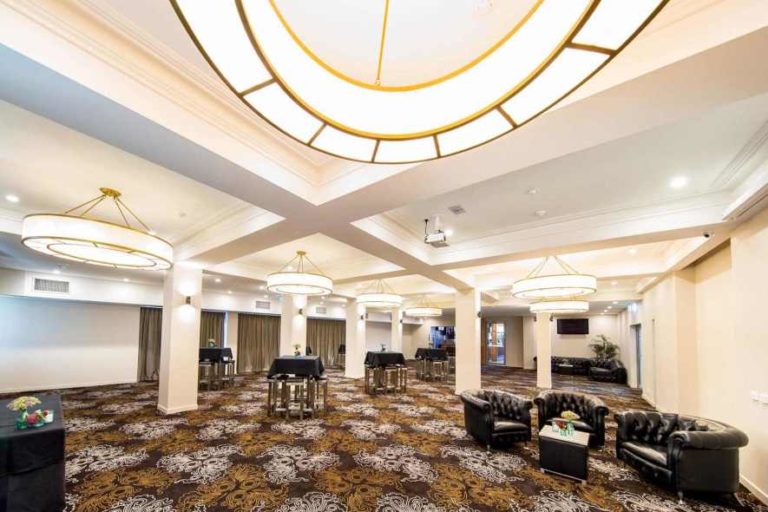Introduction
In a nation as huge and varied as Australia, the importance of readily accessible medical sources can not be overstated. One such crucial resource is the Automated External Defibrillator (AED). These devices can imply the difference between life and fatality in circumstances of heart attack. With the enhancing awareness bordering heart health and wellness and emergency situation response, recognizing how to find public AEDs throughout Australia has actually ended up being important for everybody. This overview intends to not just supply comprehensive details on discovering AED places however also to describe their use, upkeep, and legal aspects.
Understanding Automated External Defibrillators Described Australia
What Is an AED?
An Automated External Defibrillator (AED) is a portable gadget used to restore a normal heart rhythm during abrupt cardiac arrest. The tool assesses the heart's rhythm and delivers an electric shock if it finds a life-threatening arrhythmia.
How Does It Work?
The AED runs via a series of straightforward actions:
Turn on the device. Attach electrode pads to the patient's bare chest. The AED will immediately evaluate the heart's rhythm. If a shock is suggested, it will certainly instruct you to stand clear and deliver the shock.Why Are AEDs Vital in Australia?
With heart diseases being just one of Australia's leading reasons of death, having accessibility to an AED substantially boosts survival prices throughout emergencies.
How to Utilize an AED Step by Step Australia
Using an AED can seem challenging, but understanding its operation can save lives. Below's a detailed overview tailored for Australians:
Step 1: Analyze the Situation
Ensure the location is safe for both you and the sufferer before proceeding.
Step 2: Call Emergency Services
Dial 000 instantly or have another person do it while you attend to the patient.
Step 3: Prepare the Patient
Lay the person level on their back and expose their chest.

Step 4: Connect Electrode Pads
Follow visual guidelines provided with the pads; one pad takes place the top right chest and another on the lower left side.
Step 5: Evaluate Heart Rhythm
Press "Analyze" if triggered by your AED; guarantee no person is touching the client throughout analysis.
Step 6: Supply Shock if Advised
If a shock is suggested, CPR Training Wagga Wagga - First Aid Pro make certain everyone is clear before pushing "Shock."
Step 7: Return to CPR
Regardless of whether a shock was supplied or otherwise, proceed mouth-to-mouth resuscitation till emergency situation services show up or the individual shows indications of life.
AED and CPR Together Australia
Combining CPR with defibrillation boosts survival opportunities dramatically. Below's exactly how they interact:
- Immediate Response: Begin CPR immediately after asking for help. Defibrillation: Use an AED as soon as it's available. Continued Treatment: Continue both mouth-to-mouth resuscitation and utilizing an AED till specialist help arrives.
AED Usage on Kid Australia
Using an AED on children varies somewhat from adults:
- Use pediatric pads if available. Follow specific standards for youngsters under eight years old or weighing much less than 25 kg. Always seek professional medical support instantly when managing minors in emergencies.
AED Battery Upkeep Australia
Maintaining your AED's battery is vital for ensuring it runs correctly when required:
Regularly inspect battery degrees as indicated by LED lights. Replace batteries according to maker standards-- normally every two to 5 years. Keep extra batteries in stock where your AED is located.Workplace AED Demands Australia
Workplace regulations relating to AEDs vary throughout various states in Australia. It's vital for businesses to adhere to regional regulations regarding:
- Placement of devices within simple reach. Ensuring personnel are trained in their use. Regularly preserving devices to ensure readiness.
Finding Public AED Locations Throughout Australia: A Lifesaving Resource Guide
Australia flaunts numerous public areas outfitted with computerized exterior defibrillators, including shopping centers, parks, colleges, and more. Recognizing where these devices are located can save precious time throughout emergency situations.
Utilize mobile applications designed especially for locating public AEDs; lots of are straightforward and offer real-time data. Websites like St John Rescue keep upgraded databases of public AED areas across numerous Australian states. Community campaigns typically promote recognition concerning neighborhood facilities that house these lifesaving devices.
|State|Remarkable Locations|| --------------|------------------------------------------------|| New South Wales|Sydney Concert Hall, Bondi Beach|| Victoria|Melbourne Airport, Federation Square|| Queensland|Gold Coastline Convention Centre|| Western Australia|Perth Convention Centre|| South Australia|Adelaide Oval|
Defibrillator Training Training courses Australia
Training courses play a vital role in preparing individuals for emergency situation situations entailing cardiac arrest:
- Organizations like St John Rescue deal accredited training courses focusing on mouth-to-mouth resuscitation and defibrillator use. Many offices conduct routine training sessions to guarantee team are furnished with necessary skills.
Consider joining in these training courses not simply for personal expertise but also as part of workplace security initiatives.
Defibrillator Legislation Australia
Understanding current regulation surrounding defibrillators is essential for appropriate conformity:
- Various state regulations mandate certain companies to have easily accessible defibrillators on-site (e.g., schools). Some local governments use rewards or gives targeted at encouraging businesses and public centers to install these devices.
Choosing Right AED Australia
When choosing an automated outside defibrillator for community use or individual possession, take into consideration elements such as:
Ease of Use - Opt for models with clear instructions. Portability - Lightweight styles are simpler to transport. Cost - Equilibrium budget plan considerations against features used by each unit.Top Brands Recommendations:

- Philips Zoll Cardiac Science
These brand names have actually established strong reputations within Australian markets for reliability and efficiency.
FAQs
What Is An Automated External Defibrillator?
An automated outside defibrillator (AED) is a portable device developed to treat unexpected heart attack by supplying an electric shock that assists recover typical heart rhythms.
How Do I Situate Public AEDs In My Area?
You can use smartphone applications specifically produced for locating public automated exterior defibrillators or check out web sites like St John Ambulance which maintains updated data sources of places across states in Australia.
Are There Details Laws Regarding Using Defibrillators In Workplaces?
Yes, different regulations mandate that particular offices need to have access to defibrillators based upon variables like worker count and place kind; it is essential check regional regulations.

Can I Use An AED On A Child?
Yes! Nevertheless, unique pediatric pads may be called for depending First Aid Courses in Wagga Wagga - firstaidpro.com.au upon age/weight of kid; constantly follow manufacturer's guidelines when making use of an automated outside defibrillator on minors.
How Usually Needs to I Examine My AED's Battery?
It's a good idea to inspect your automated outside defibrillator's battery monthly; replace batteries according to producer recommendations-- commonly every two-five years-- or when triggered by indicator lights.
Where Can I Obtain Educating On Utilizing An AED?
Various organizations such as St John Ambulance deal training courses on exactly how to effectively utilize a computerized external defibrillator in addition to mouth-to-mouth resuscitation techniques; take into consideration signing up through regional branches or on the internet platforms.
Conclusion
In recap, knowing exactly how to find public Automated External Defibrillators throughout Australia could conserve lives during important emergency situations related to heart attacks. Familiarizing yourself with use methods-- such as combining mouth-to-mouth resuscitation initiatives-- preserving tools appropriately, sticking strictly to legal needs at offices, choosing ideal tools based upon individual needs-- all contribute toward enhanced neighborhood safety and security criteria general! With resources easily available at our disposal today with modern-day technology improvements coupled along with reliable training programs offered throughout numerous companies nationwide-- it's important all of us take obligation towards becoming educated citizens prepping ourselves whenever encountered against prospective disasters!